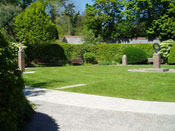
Return to Co. Louth list

Go to Prehistoric Alignments & Dials

Go to Ancient Monastic Dials

Go to Medieval Dials

Go to Modern (1600+) Dials

Go to Sundial Info.and Books

Return to Co. Louth list |
 Go to Prehistoric Alignments & Dials |
 Go to Ancient Monastic Dials |
 Go to Medieval Dials |
 Go to Modern (1600+) Dials |

Go to Sundial Info.and Books |

The "Timekeeper" Sundial |
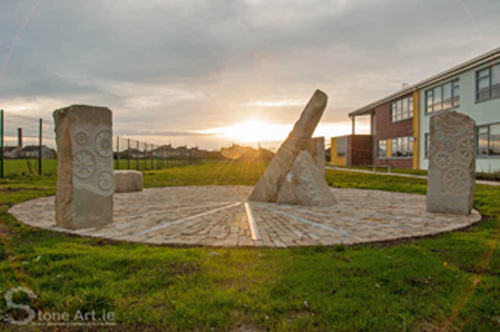
|
Early in 2015 under the ‘Per Cent for Art’ scheme, a government initiative whereby 1% of the cost of any publicly funded capital infrastructural and building development, can be allocated to the commissioning of a work of art, Sunny Wieler of StoneArt, Waterford, was commissioned to create a sculpture for St. Joseph’s Secondary School in Drogheda Co. Louth, on completion of a major extension to the school. The brief was to create “…an outdoor sculptural area in a space that links the old and new section of the school. The idea of the passing of time and linking our past to our future is the main theme for the proposed project…” . Sunny’s 'Timekeeper’sculpture pays tribute to this ‘passing of time’ through the medium of a stone sundial. |
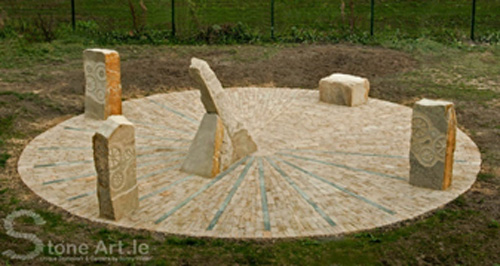
|
From a distance the 1.5m high roughhewn sandstone standing stones set in the 8m diameter circular paved area is reminiscent of a prehistoric Neolithic structure. |
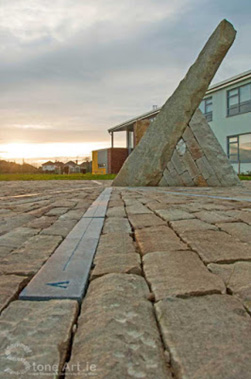
|
Close-up the sundial element of the sculpture becomes apparent. The 1.9m high gnomon, the large angled stone shadow caster in the centre of the paved area, is angled parallel to the earth's axis, pointing towards the pole star, and paying tribute to the first angled gnomon sundials invented in the late 1300's. The jagged shadows from the gnomon’s edge on the dial surface contrast markedly with the precision of the cut and polished limestone hourline bars with their incised Roman numerals. This in turn highlights the difference between the rudimentary time keeping of the prehistoric people and the sophisticated precision of modern engineered clocks. The relief carvings of cogs and wheels on the standing stones emphasis this contrast. North, East and West ( N, E and W) directions are cut into the back of the tall standing stones with South (S) on the back of the low seat stone. |
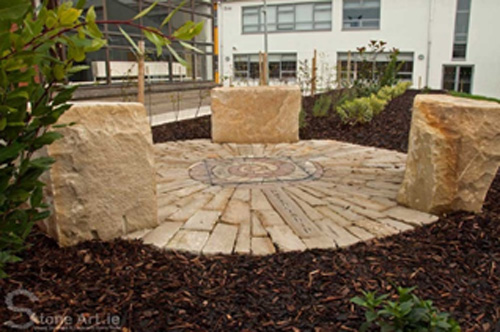
|
A separate stone seating area in the courtyard between the old and new buildings is an extension of the sundial sculpture, with a time capsule placed under the stone mosaic in the floor as a symbol of the schools confidence in its future. |
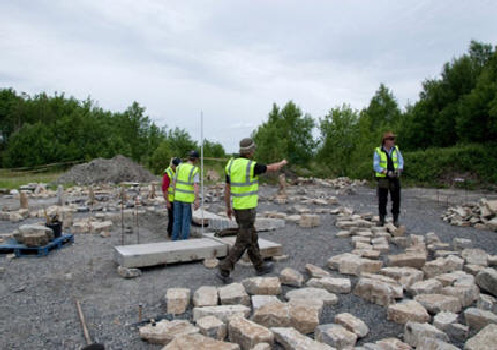
|
The team who brought this project to fruition included: Original Artistic Concept of a sundial: Sunny Wieler - visit his website Stone Art at -
Letter Cutter: Alex Panteleyenko Assistant Stonemason/Letter Cutter: Ken Curran Additional Artists Assistants: Karl Kennedy and Mark Grogan |